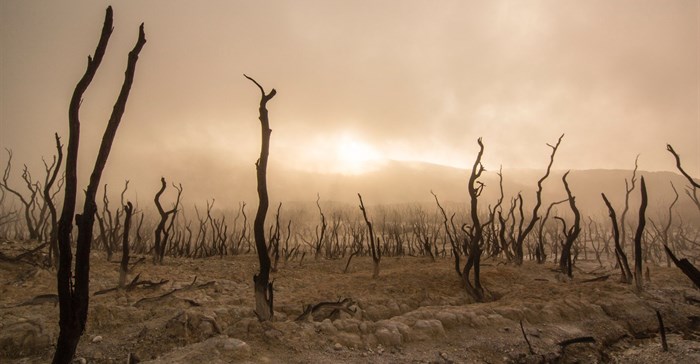The National Strategic Framework on climate-smart agriculture, forestry and fisheries for 2018-2028 (DAFF, 2018) regards climate change as this century's greatest challenge for humankind, with South Africa not immune to its impacts.
Global warming is the most evident form of climate change dynamics, but in southern Africa, the impacts also include increased frequency and intensity of extreme weather events (e.g. droughts, floods, heat), environmental damage, increased crop infestation by pests and diseases, depletion of household assets, and increased rural-urban migration.
Other challenges include increased biodiversity loss, depletion of wildlife and other natural resources, a decline in soil conditions, increased health risks and the spread of infectious diseases.
Despite the potentially serious effects and challenges climate change can have, there are also positive spin-offs that are likely to occur, though the latter is not clearly recognised and capitalised on yet. In agriculture, adaptation and mitigation should be pursued – to complement each other – in production systems and communities.
Agricultural research activities addressing topics concerned with vulnerability, mitigation and adaptation to climate change to ensure imminent productive farming are currently prioritised.
A new set of buzzwords
A new set of buzzwords usually accompanies new strategic thinking and development to describe the underlying cause-effect relationship. In this instance, it is ‘climate change lingo’.
According to Parry et al. (2007), climate change vulnerability involves “the degree to which a system is susceptible to cope with adverse effects of climate change, including climate variability and extremes. Vulnerability is a function of the character, magnitude and rate of climate change and variation to which a system is exposed, its sensitivity, and its adaptive capacity.”
Exposure components contributing to vulnerability include temperature, precipitation, evapotranspiration and climate-water balance, including extreme events such as heavy rain and meteorological drought.
Sensitivity refers to the degree to which the system is favourably or unfavourably affected by the specified climate change exposure and already includes historic and recent adaptation. A combination of exposure and sensitivity determines the prospective impact of climate change.
Similarly, adaptive capacity is described as “the ability of a system to adjust to climate change, including climate vulnerability and extremes, to moderate potential damages, to take advantage of opportunities, or cope with the consequences” (Fritzsche et al., 2014).
Direct and indirect effects
There are direct and indirect effects of climate change in agricultural production systems that could be explained with examples.
In extensive beef cattle production, the direct effect of a lack of maintenance of homeothermy influences animal performance traits (Rust and Rust, 2013). Reproduction activity is one example of a process that becomes affected. For example, heat stress may reduce the duration of oestrus and lengthen post-partum intervals in cows. It is believed that oocyte growth is compromised by altering progesterone, luteinising and follicle stimulating hormones, affecting the aforementioned (Ronchi et al., 2012).
Likewise, the stressor reduces the concentration and motility of sperm in the ejaculates of bulls (Meyerhoeffer et al., 1985; Hansen, 2009), which may require a period of eight weeks after an event for the semen to return to normal (Scholtz et al., 2016).
In contrast, indirect effects of climate change to the plant and animal communities may affect productivity through altered nutrient supply and incidences of pests and diseases (MacNeil and Vermeire, 2012).
Proxy indicators
Direct and indirect (proxy) indicators are parameters providing information regarding states or conditions that are not directly measurable (Fritzsche et al. after Meyer, 2011).
In South Africa, proxy indicators for fertility traits in cows are the age at first calving and the intercalving period. These traits are dependent on sufficient nutrient supply for proper growth and development of the foetus in pregnant female cattle, the maintenance of adequate body condition to calve and lactate, and to rebreed within the next breeding season after calving (NRF, 2000).
Yet there is a clear lack of evidence on the ‘sensitivity’ of cow fertility traits to exposure components such as temperature and precipitation in extensive environments. These may have enhanced impact due to climate change.
When these words are well understood, other words can follow: vulnerability assessments, vulnerability assessment implementation plan, impact chain, adaptive capacity indicators, and aggregating indicators of exposure, sensitivity, adaptive capacity and vulnerability components. Fortunately, it is probable that this ‘lingo’ will only be used by academia.
Climate change lingo, however, will be part of the ongoing debate regarding adaptation effectiveness and the practical implementation of climate-smart agriculture, which sustains climate-resilient sustainable development.






































